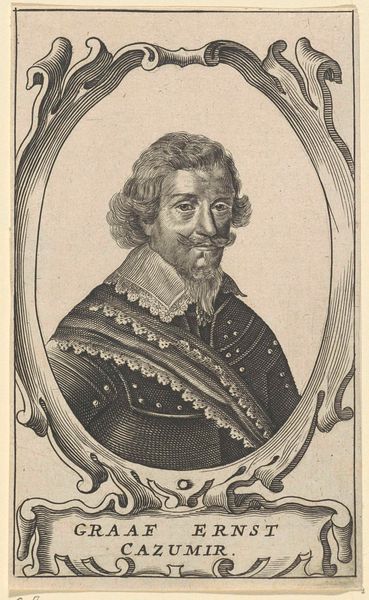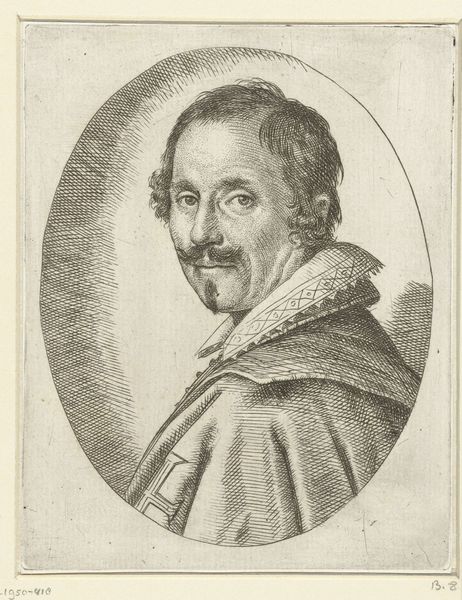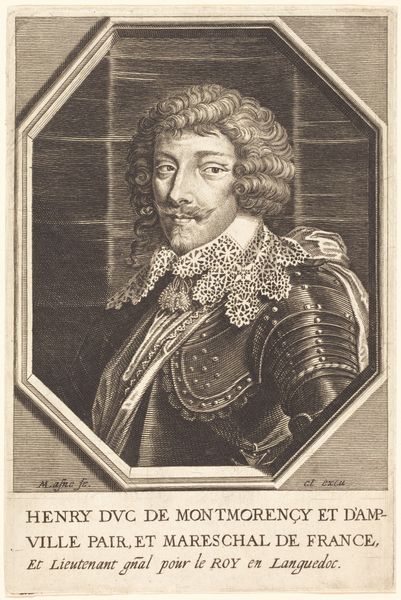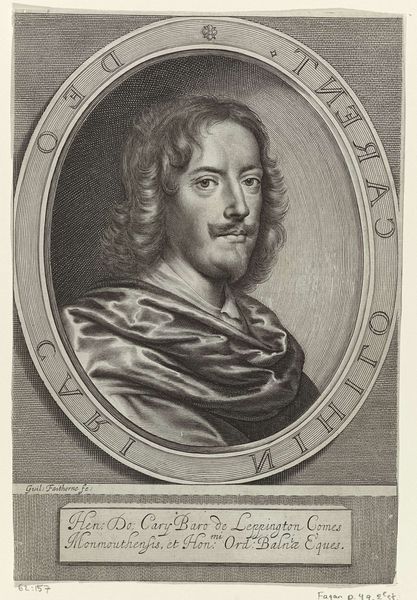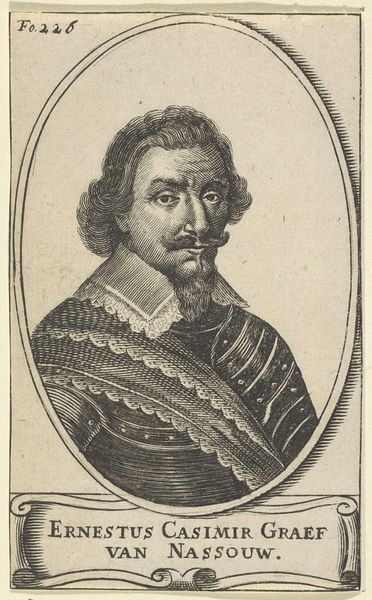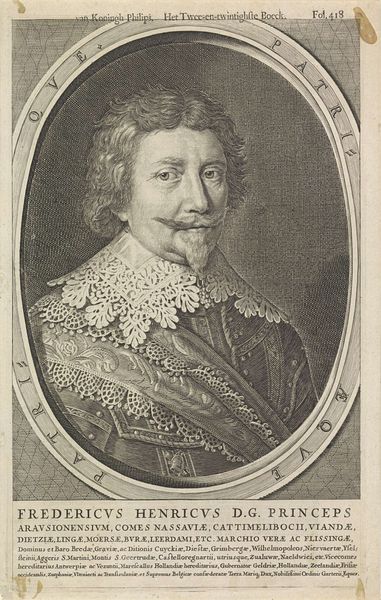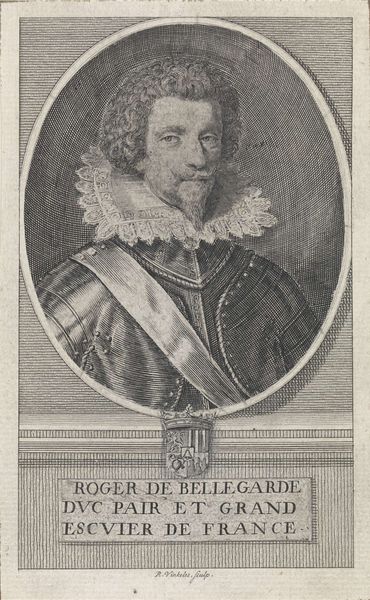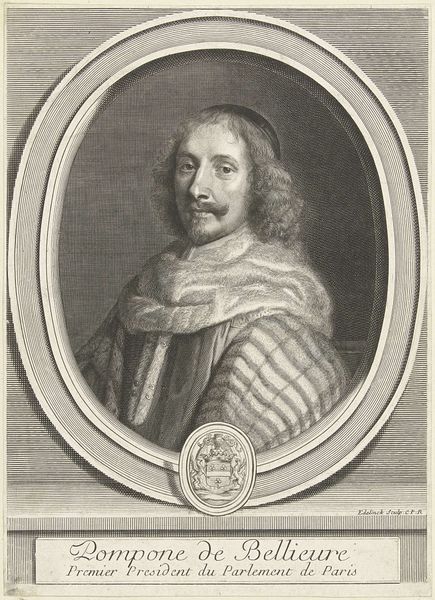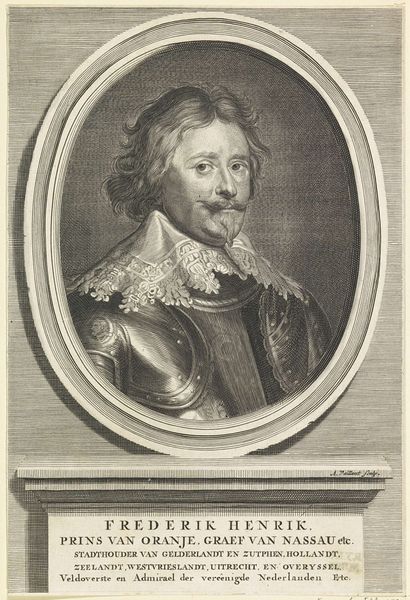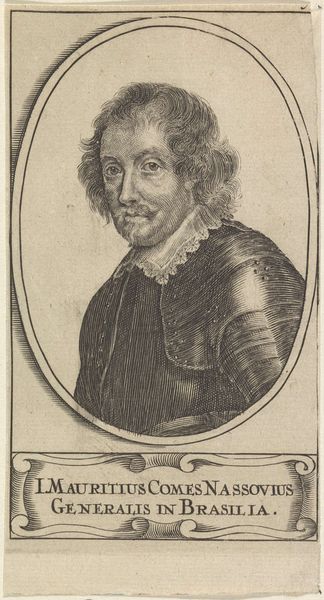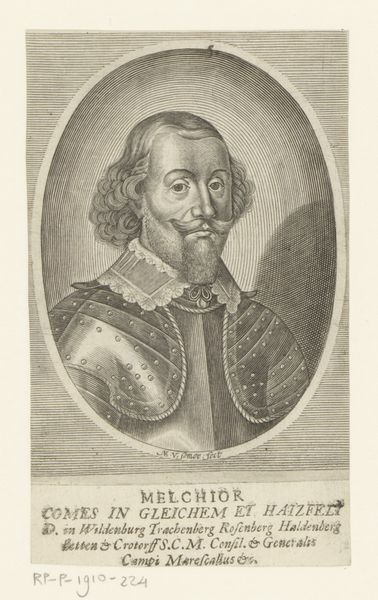
print, engraving
#
portrait
#
baroque
# print
#
figuration
#
history-painting
#
engraving
Dimensions: height 125 mm, width 72 mm
Copyright: Rijks Museum: Open Domain
Editor: Here we have a 17th-century print, "Portret van Ernst Casimir, graaf van Nassau-Dietz," artist unknown, at the Rijksmuseum. It has such a stately presence! How do you interpret this work? Curator: The enduring power of portraiture rests in its ability to distill a person’s essence through symbols. The engraving depicts Ernst Casimir within an oval frame, a classical motif signaling importance and timelessness. Do you notice the armor? Editor: Yes, it’s quite ornate. It gives him a noble and military air. Curator: Precisely. Armor carries potent associations. It's not merely protective gear but an emblem of courage, leadership, and preparedness for defense – both literal and symbolic. Note the lace collar as well; its delicate fragility provides a counterpoint, a touch of refinement amidst martial readiness. What might that contrast suggest to you? Editor: Perhaps it indicates a man of both strength and cultivated taste? A leader but also a person of culture? Curator: Well observed! He’s carefully composed as a representation of power and authority, reinforcing his position and legacy for generations to come. Portraits were frequently commissioned as statements about cultural memory. Editor: I hadn't considered all the symbolic layers embedded in a portrait like this. The armor and lace speak volumes! Curator: Exactly! Images speak, if you know how to listen to them and decode what they signify. What we consider superficial or a literal representation holds a world of potential understanding about the represented and the representer.
Comments
No comments
Be the first to comment and join the conversation on the ultimate creative platform.
